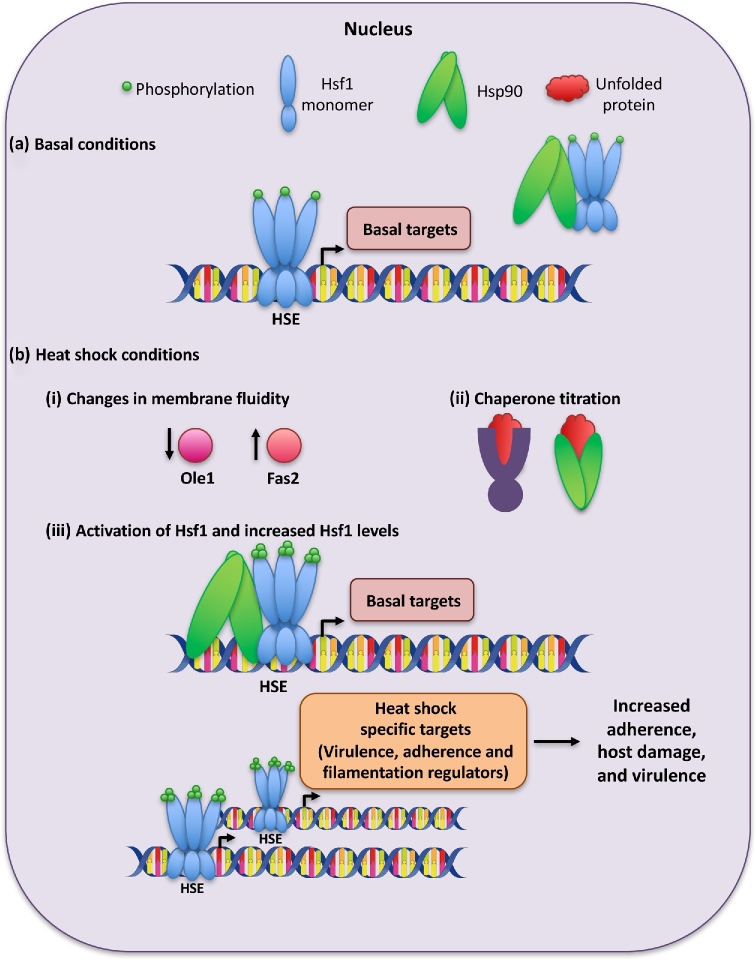Figure 3.
Model for Hsf1-dependent transcriptional regulation under basal and heat shock conditions in Candida albicans. (a) Under basal conditions, C. albicans Hsf1 binds at the HSEs within the promoter regions of its basal targets and regulates their expression. Hsf1 is bound by Hsp90, which represses Hsf1 function. (b) (i) Upon temperature upshifts, the expression of the unsaturated fatty acid desaturase Ole1 decreases, causing an increased expression of the fatty acid synthase, Fas2. This leads to an alteration in the ratio of saturated to unsaturated fats, which alters membrane fluidity. (ii) Upon elevated temperature there is also an increase in unfolded and misfolded proteins that require chaperoning, leading to a titration of Hsp90 away from repressing Hsf1. While it is possible that other chaperones like Hsp70 are also involved in this regulation, this has yet to be explored. (iii) Hsf1 is activated by the de-repression of Hsp90 and changes in membrane fluidity, and is phosphorylated. Hsf1 induces the expression of its basal targets, including upregulating its own expression. Upon heat shock, Hsf1 also binds and induces the expression of additional heat shock-specific targets involved in adherence, host cell damage and filamentation; this ultimately leads to increased cellular adherence and host cell damage.

